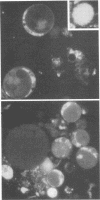Abstract
This study was prompted by the paradox of strong presence of mitochondria in an anaerobic protozoan, recently reclassified from the yeasts. Stemming from publication in 1911 to 1912, Blastocystis hominis has been generally accepted as a harmless intestinal yeast of humans, with short standardized textbook (parasitology) descriptions, even to the present day. Reports since 1967 have changed the classification of B. hominis from yeast to protozoan (Sarcodina), and this has been followed by interest in B. hominis-caused disease, resulting in documentation of disease in humans and other primates. In this study of B. hominis, the basic ultrastructure of the mitochondria was shown by thin-section electron microscopy to be identical to that of an archetypical mitochondrion. There were hundreds of them in large B. hominis cells (100 to 200 microns in diameter). Mitochondria were confined to a peripheral ring of cytoplasm bounded by the outer cell membrane (there is no cell wall) and the membrane of the large, spherical, organelle-free central body that constitutes 75% of the cell's volume. Mitochondria tended to surround the cell's usual two to four nuclei. Rhodamine 123 stained the mitochondria selectively, visualized by fluorescence microscopy. The cell was devoid of cytochromes. Addition of 0.1% cytochrome c to the growth medium increased utilization of glucose by 34% and that of lactate by 17%. Furthermore, it markedly increased the number of mitochondrion-filled cells. At higher concentrations, cytochrome c inhibited the growth of the cells. Despite the presence of large numbers of mitochondria, activities of the mitochondrial enzymes pyruvate dehydrogenase complex, alpha-ketoglutarate dehydrogenase complex, isocitrate dehydrogenase, glutamate dehydrogenase, and cytochrome c oxidase were absent. Thus, the function of the mitochondria in B. hominis remains unknown. Considerable activities of aspartate aminotransferase and alanine aminotransferase were found. Aldolase activity was prominent. Pyruvate decarboxylase was present. Diaphorase and lactate dehydrogenase were detectable but in suspect quantities. Other missing enzymes were gamma glutamyl transpeptidase, alkaline phosphatase (a lysosomal marker), and creatine kinase isoenzymes.
Full text
PDF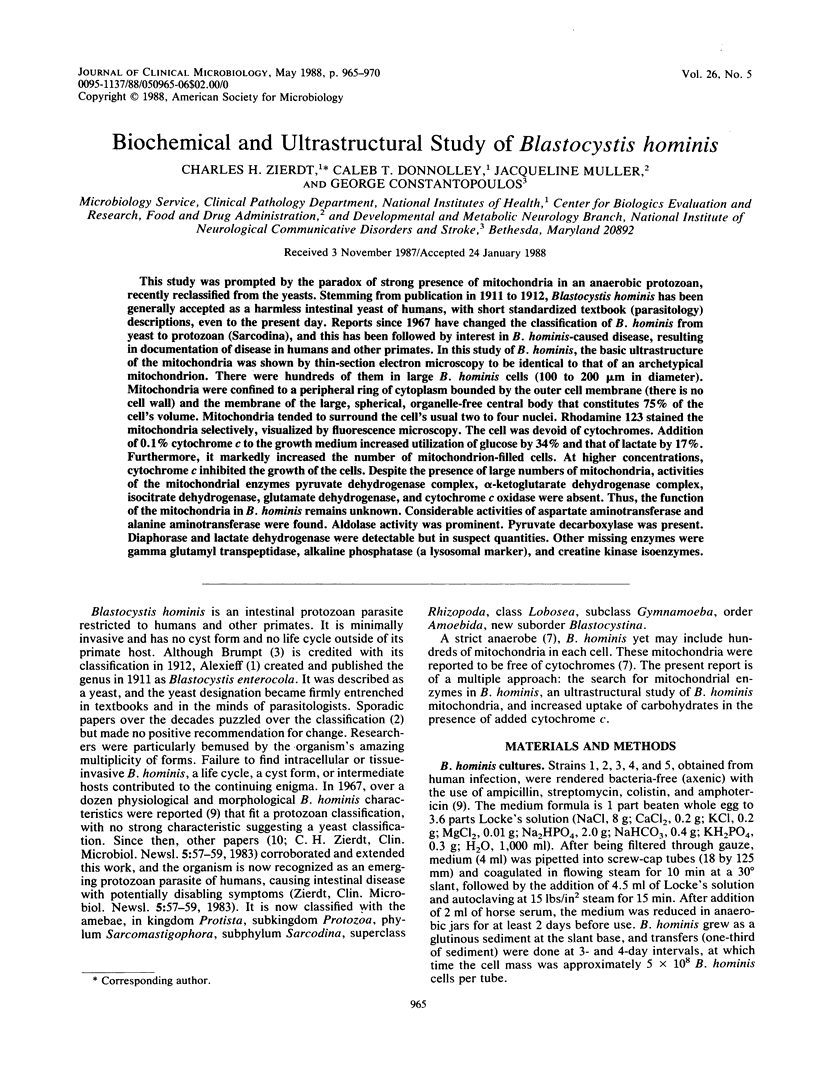
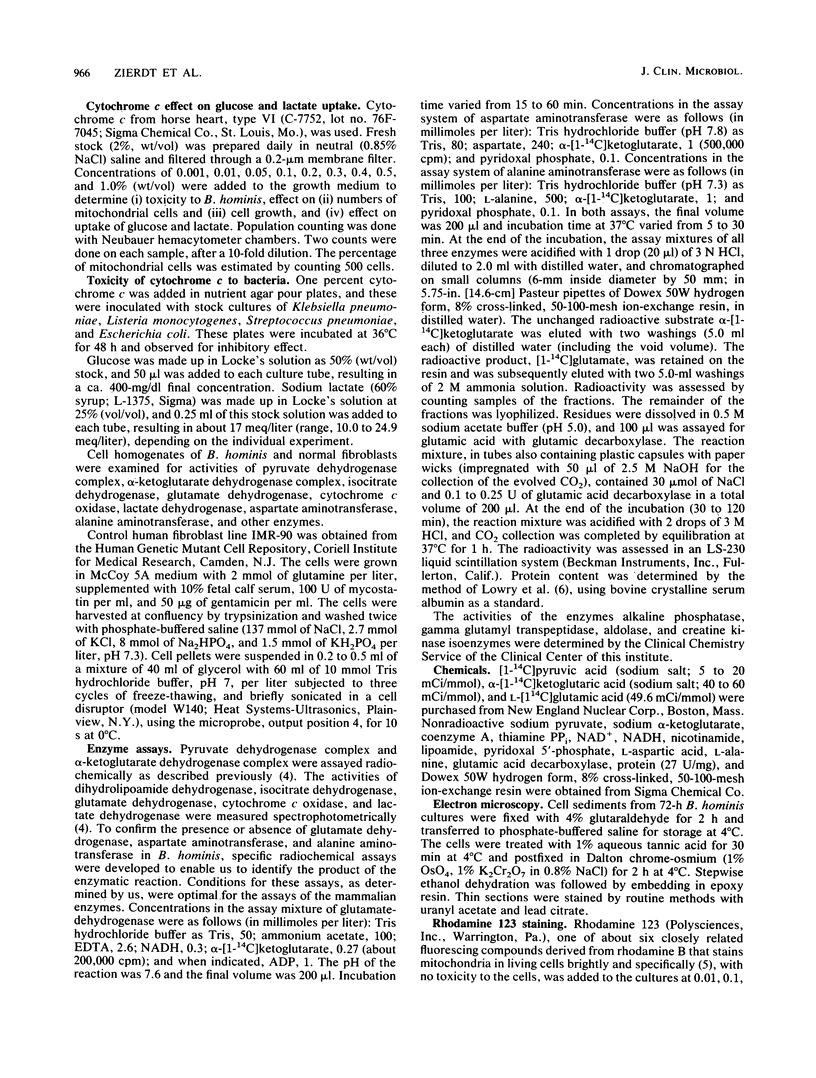
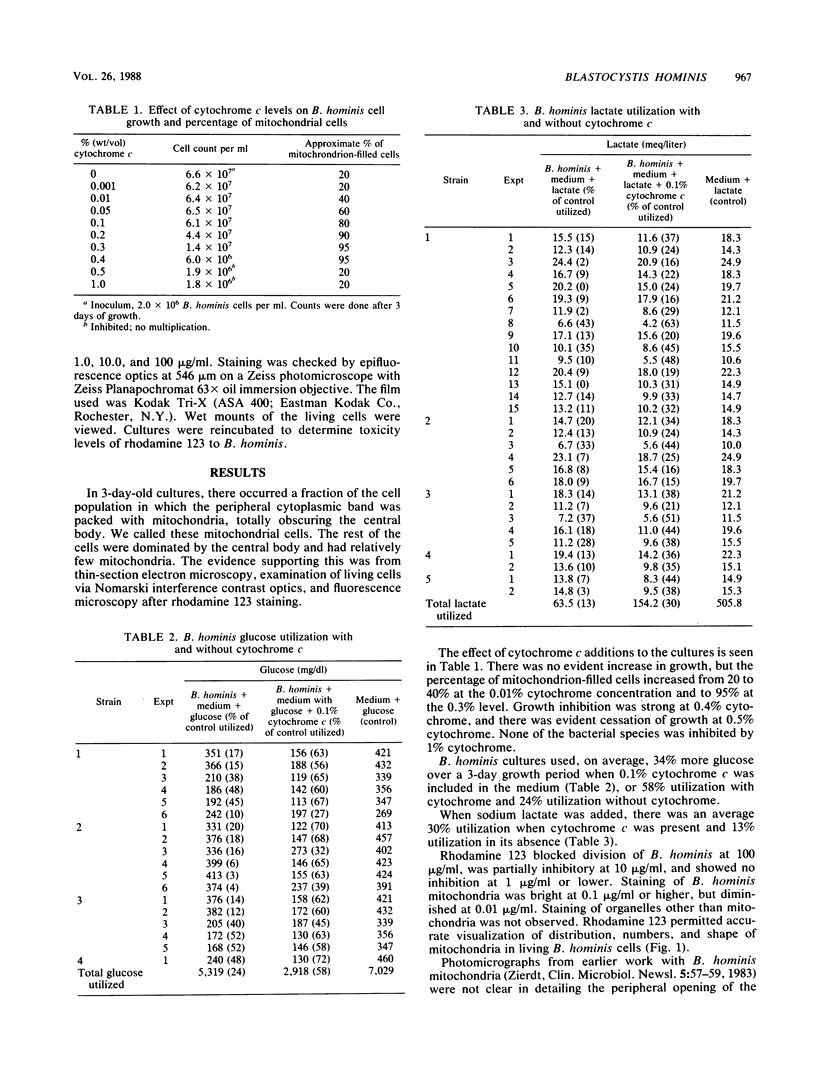
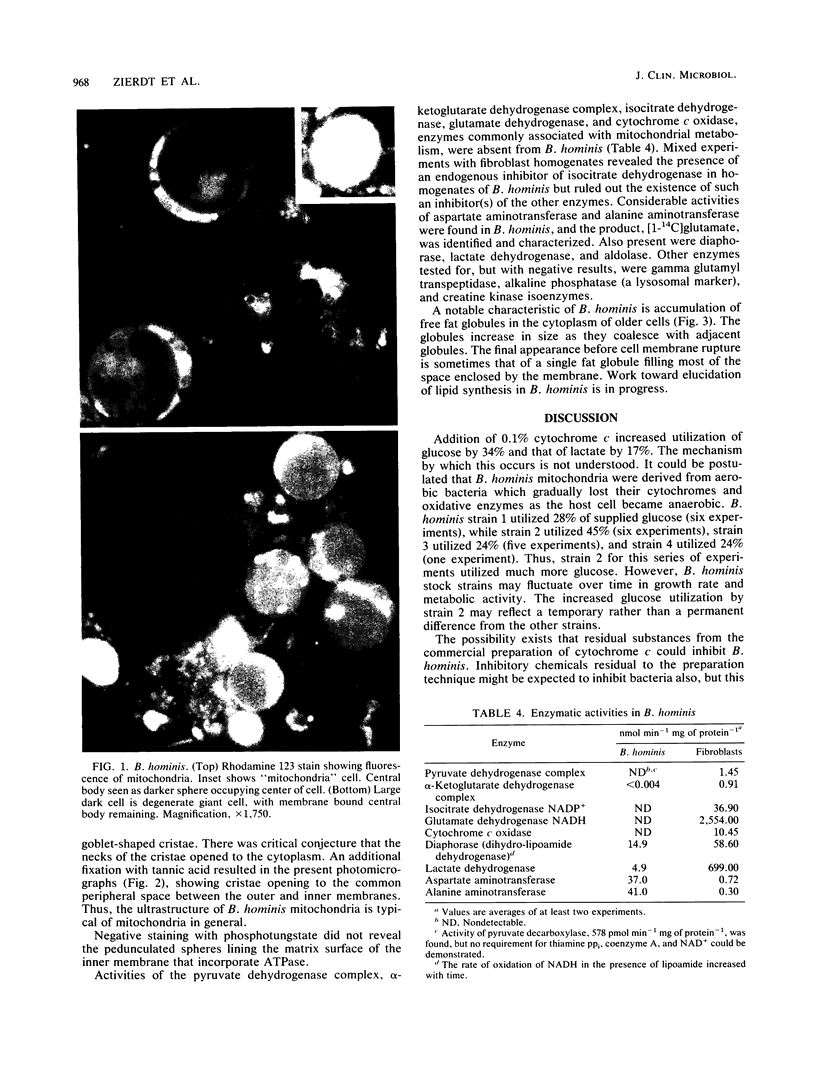
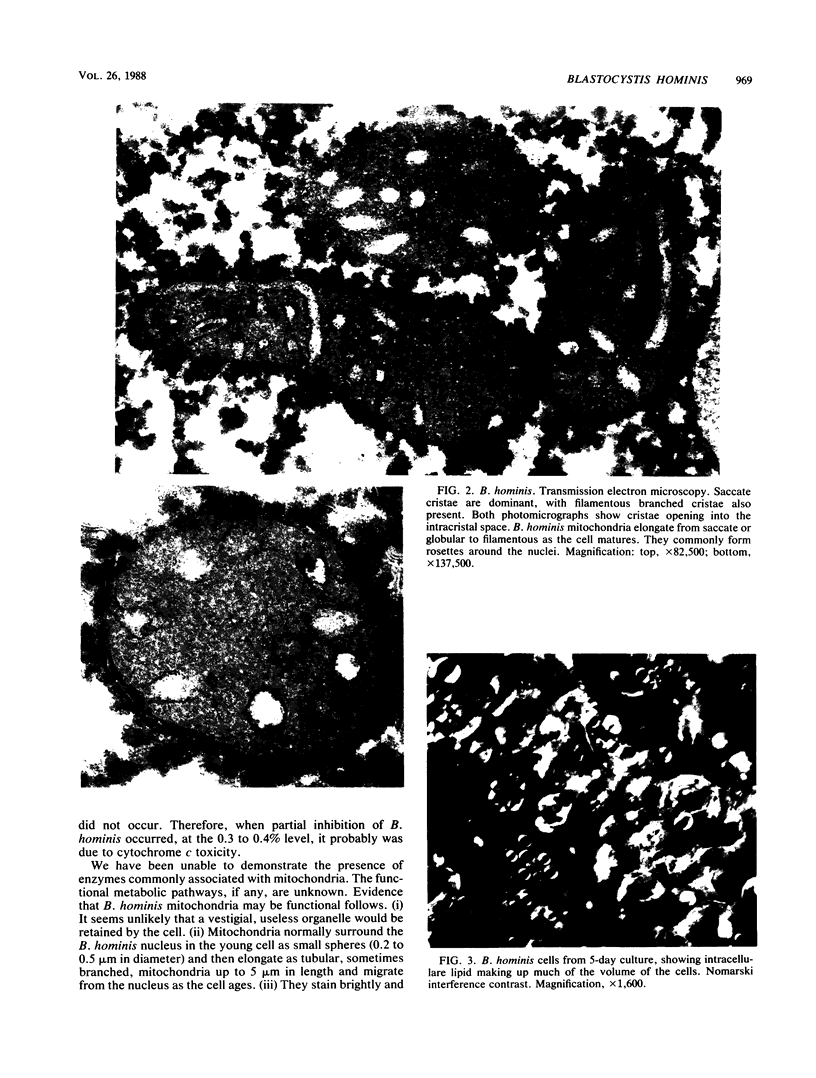
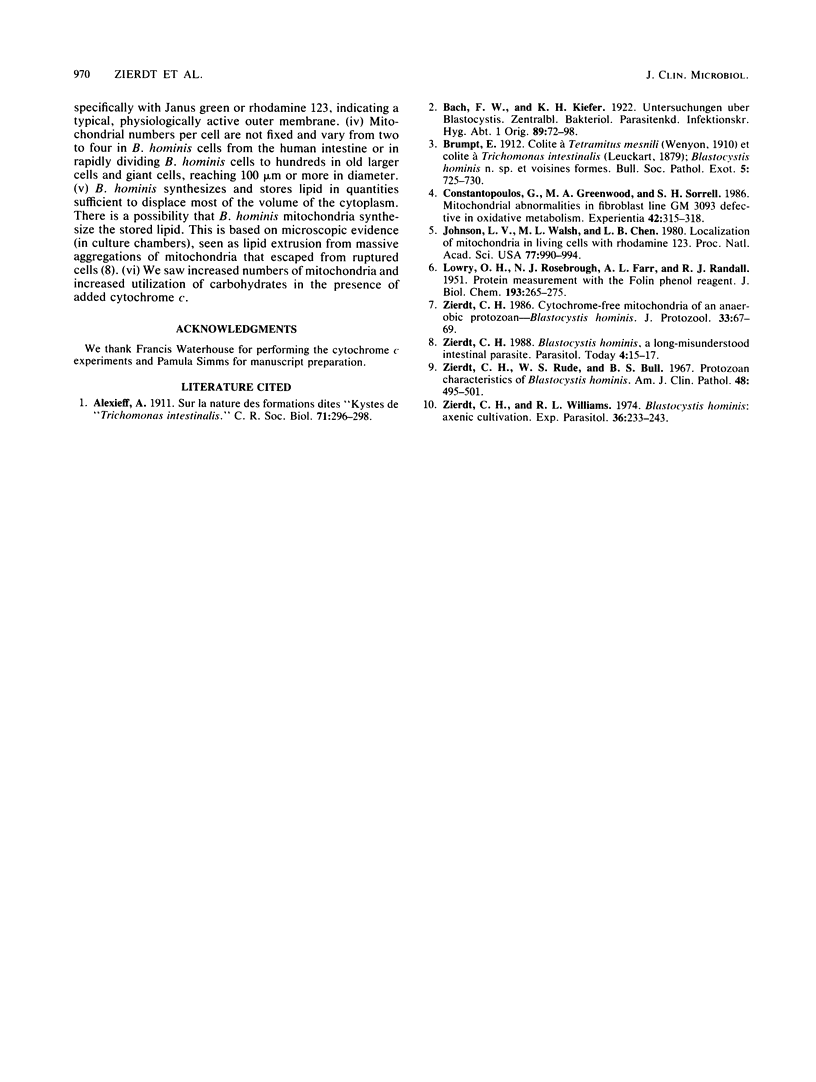
Images in this article
Selected References
These references are in PubMed. This may not be the complete list of references from this article.
- Constantopoulos G., Greenwood M. A., Sorrell S. H. Mitochondrial abnormalities in fibroblast line GM3093 defective in oxidative metabolism. Experientia. 1986 Mar 15;42(3):315–318. doi: 10.1007/BF01942519. [DOI] [PubMed] [Google Scholar]
- Johnson L. V., Walsh M. L., Chen L. B. Localization of mitochondria in living cells with rhodamine 123. Proc Natl Acad Sci U S A. 1980 Feb;77(2):990–994. doi: 10.1073/pnas.77.2.990. [DOI] [PMC free article] [PubMed] [Google Scholar]
- LOWRY O. H., ROSEBROUGH N. J., FARR A. L., RANDALL R. J. Protein measurement with the Folin phenol reagent. J Biol Chem. 1951 Nov;193(1):265–275. [PubMed] [Google Scholar]
- Zierdt C. H. Blastocystis hominis, a long-misunderstood intestinal parasite. Parasitol Today. 1988 Jan;4(1):15–17. doi: 10.1016/0169-4758(88)90049-x. [DOI] [PubMed] [Google Scholar]
- Zierdt C. H. Cytochrome-free mitochondria of an anaerobic protozoan--Blastocystis hominis. J Protozool. 1986 Feb;33(1):67–69. doi: 10.1111/j.1550-7408.1986.tb05559.x. [DOI] [PubMed] [Google Scholar]
- Zierdt C. H., Rude W. S., Bull B. S. Protozoan characteristics of Blastocystis hominis. Am J Clin Pathol. 1967 Nov;48(5):495–501. doi: 10.1093/ajcp/48.5.495. [DOI] [PubMed] [Google Scholar]
- Zierdt C. H., Williams R. L. Blastocystis hominis: axenic cultivation. Exp Parasitol. 1974 Oct;36(2):233–243. doi: 10.1016/0014-4894(74)90062-9. [DOI] [PubMed] [Google Scholar]



